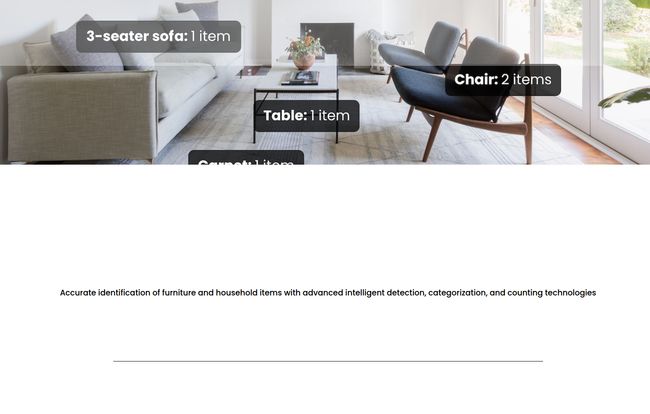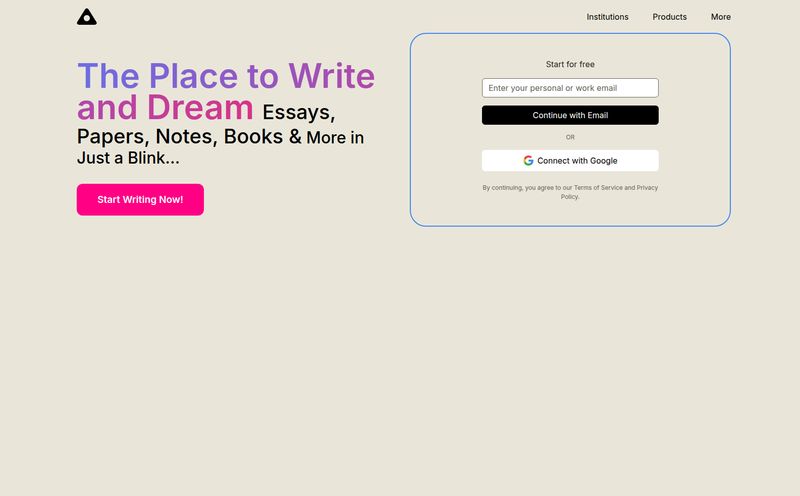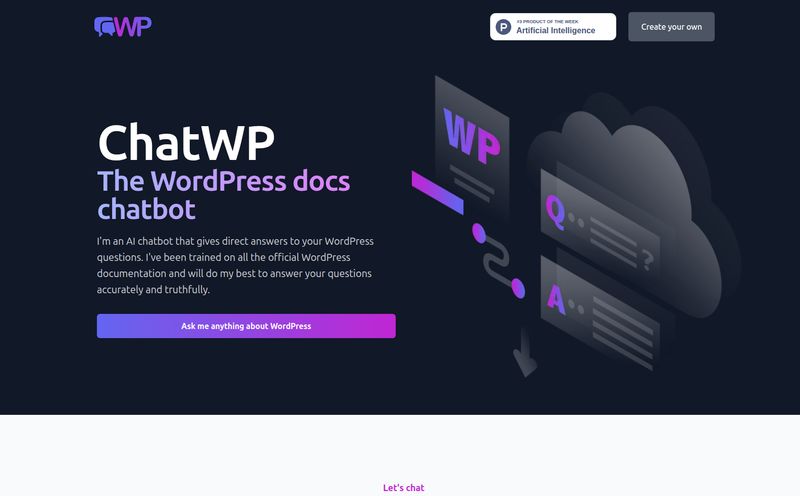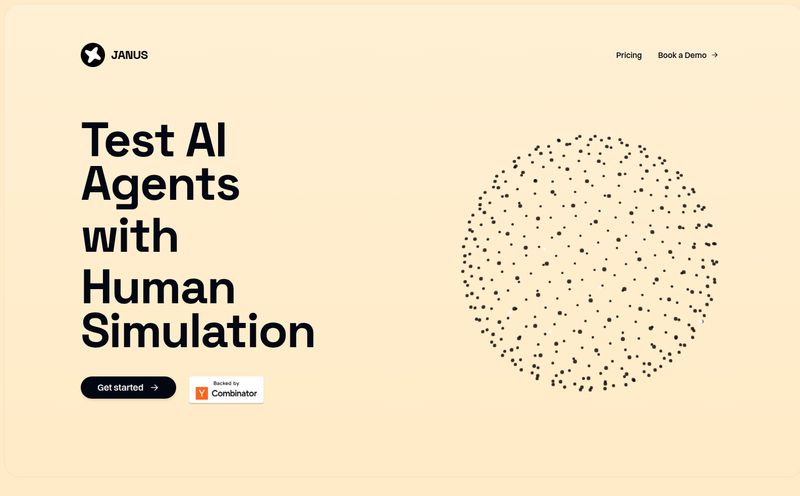If you’ve ever had to manage inventory, whether for a moving company, a furniture store, or even just trying to sell your stuff on Facebook Marketplace, you know the soul-crushing boredom of counting. and listing. every. single. item. It’s a throwback to the dark ages of spreadsheets and tally marks, and frankly, we have better things to do.
We're living in an era where AI is in everything, from writing emails to creating bizarre works of art. Sometimes it feels like a solution looking for a problem. But every now and then, a tool comes along that feels less like a gimmick and more like a genuine sigh of relief. I stumbled across one of those recently: the Furniture & Household Item Recognition API from api4ai. And I have to say, my inner SEO and process-obsessed geek is pretty intrigued.
What Exactly is This Furniture Recognition API?
Okay, let's break it down without the jargon. An API (Application Programming Interface) is basically a messenger that lets different software programs talk to each other. In this case, the api4ai tool is a specialized messenger you can send a picture to. What does it send back? A neat, organized list of all the furniture and household items it sees in that picture.
Think of it like this: you upload a photo of a living room, and the AI instantly reports back, “I see one 3-seater sofa, two armchairs, one coffee table, and a suspicious number of decorative pillows.” It’s designed for businesses that deal with physical stuff all day long—think real estate, retail, interior design, and especially moving and cleaning companies.
The Features That Actually Matter
A feature list is just a list until you see how it solves a problem. I’ve seen a million platforms with a laundry list of 'features', but here’s what stood out to me as genuinely useful.
Automatic Identification and Counting
This is the core of it all. The tool claims to recognize over 200 different categories of household items. That's not just “chair” but potentially different types of chairs. It doesn't just identify them; it counts them. For a moving company creating a quote, this is the difference between a 10-minute automated estimate and a 2-hour manual walkthrough. That's huge.
Cloud-Based and Ready to Go
I’m a big fan of tools that just work out of the box. This API is fully cloud-based, which means you don’t need to install a bunch of complicated software on your own servers. It’s an off-the-shelf solution. You sign up, get your access key, and you can start sending images to it. This lowers the barrier to entry for smaller businesses that don't have a dedicated dev team on standby.
The All-Important JSON Output
For the tech-heads in the room, this is crucial. The data comes back in a clean JSON format. This means it’s structured, predictable, and easy for a developer to integrate into your website, app, or internal inventory system. It’s not just a cool visual trick; its a practical data delivery system.

Visit Furniture & Household Item Recognition API
A Quick Look at the Pricing Tiers
Alright, let’s talk money. Nothing is ever truly free, right? The API runs on a subscription model, which is a double-edged sword for many. It means predictable monthly costs but also another recurring bill. I tried to find their dedicated pricing page for more details, but... well, I hit a 404 error page. We've all been there, a broken link here or there, it happens to the best of us!
However, from the main page, I was able to piece together their pricing structure. It seems pretty straightforward and scales for different levels of use.
| Plan | Price per Month | Best For |
|---|---|---|
| BASIC | $9.99 | Individuals or very small projects |
| PRO | $14.99 | Small businesses and growing needs |
| ULTRA | $199.99 | Established businesses with high volume |
| MEGA | $1099.99 | Enterprise-level usage |
Note: These prices were taken from the product page. Always check the official site for the most current information!
The Real-World Impact: Who is This For?
This is where my SEO brain starts buzzing. A cool tool is one thing, but a tool that can improve business processes, user experience, and ultimately traffic and conversions? That’s another thing entirely.
For Moving and Cleaning Companies
This is a no-brainer. They specifically mention this use case, and it’s brilliant. A customer uploads a few photos of their rooms, and the API generates an itemized list. This allows for instant, accurate quotes. It reduces disputes over what was supposed to be moved and builds a ton of trust upfront. It's efficiency personified.
For Real Estate and Interior Design
Imagine a real estate listing where every photo is automatically tagged with the furniture inside. Clicking on a couch could link to a similar model for sale. From an SEO perspective, you’re suddenly ranking for terms like “apartment with mid-century modern armchair.” For interior designers, it’s a way to quickly inventory a client’s existing pieces to see what can be repurposed. It turns a static image into an interactive, data-rich asset.
For Retail and E-commerce
The potential here is massive. Think “visual search” on a budget. A user uploads a photo of a room they like, and your site shows them all the similar products you sell. Or use it for internal inventory—take a quick photo of a new shipment in the warehouse and get an instant digital record. This is the kind of stuff that makes customers' lives easier, and that’s always good for business.
The Good, The Bad, and The AI
So, what’s the verdict? No tool is perfect. In my experience, it's always about weighing the good against the not-so-good.
The good is obvious. It’s a powerful, ready-to-use automation tool that solves a very real, very tedious problem. The algorithm seems robust, and the cloud-based nature makes it accessible. It’s a classic example of using AI to take over a repetitive task that humans hate doing.
The not-so-good? Well, the subscription model isn't for everyone. Some folks prefer a pay-as-you-go or a one-time license. They also mention a potential one-time setup fee for customization, which is something to be aware of if you have very specific needs. But these are pretty standard business practices in the SaaS world today.
Final Thoughts From an SEO Brain
At the end of the day, tools like the api4ai Furniture Recognition API are more than just tech novelties. They represent a shift in how we handle data. For years, the content of images has been a black box for search engines and inventory systems. We’ve relied on manual alt tags and descriptions.
This technology blows that box wide open. It turns images into structured data, and structured data is the lifeblood of good SEO and efficient operations. It can lead to richer user experiences, smarter internal processes, and new ways to generate traffic and sales. Is it going to magically solve all your problems? Of course not. But it might just be the digital Marie Kondo that helps you clear out the clutter and spark some serious joy in your workflow.
Frequently Asked Questions (FAQ)
What is the api4ai Furniture Recognition API?
It's a cloud-based AI tool that analyzes images to automatically identify, categorize, and count over 200 types of furniture and household items, providing the output in a structured JSON format.
How accurate is the item recognition?
According to their documentation, the API uses a robust algorithm designed to maintain accuracy even under varying conditions like different lighting or angles. Real-world accuracy would depend on image quality, but it's built for precision.
Is it difficult to integrate this API?
No, it's designed to be an off-the-shelf solution. Since it's a cloud-based API, a developer can integrate it into an existing application or website relatively easily using standard methods for API calls. You can send an image as a binary file or just by providing a URL.
What kind of businesses would benefit most from this?
Businesses that regularly deal with physical household goods. This includes moving companies, cleaning services, real estate agencies, interior design firms, insurance companies (for claims), and furniture retailers.
How does the pricing work?
It's a monthly subscription model with different tiers (Basic, Pro, Ultra, Mega) based on usage volume. This makes it scalable, whether you're a small startup or a large enterprise.
References and Sources
- api4ai Official Website - https://api4.ai/
- An article on the rise of Visual AI in E-commerce from Forbes - Forbes Tech Council



